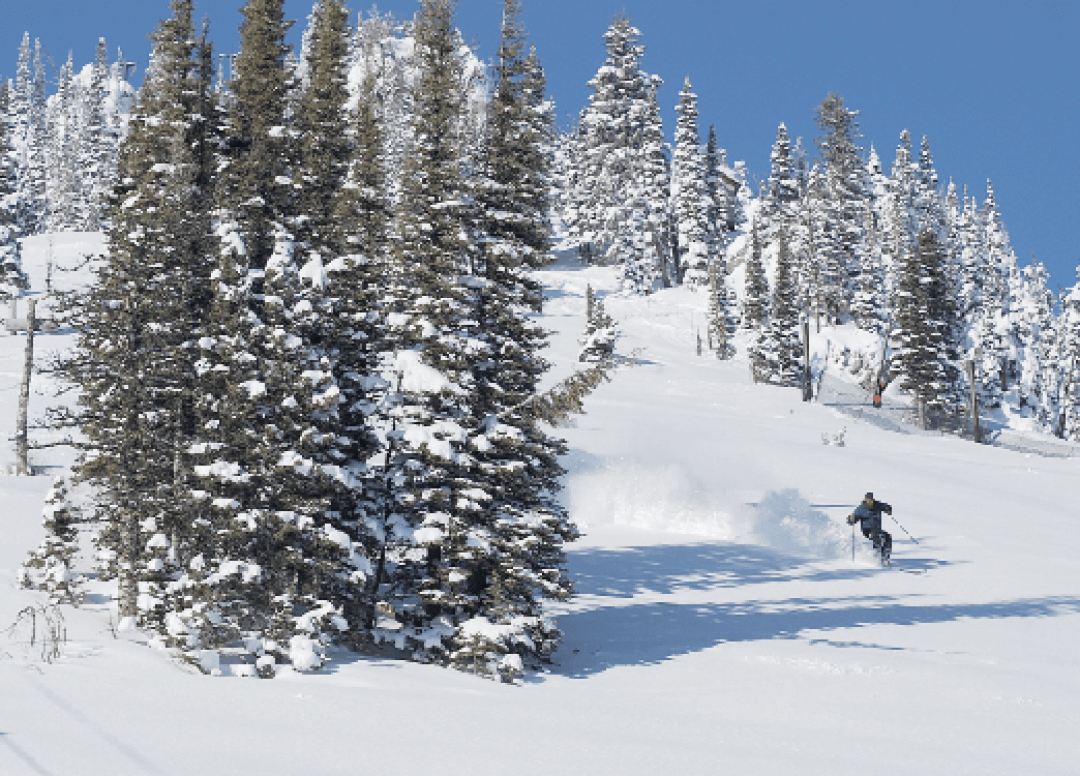Do I need to work out before ski season?
I’m not an Olympian
Sarah May | Friday Nov. 1st, 2019

As fresh snow blankets the Bridgers and Big Sky comes to life, we break out our skis with eager anticipation of fresh powder and days spent skiing down the mountains we call home. For most of us, skiing is a seasonal recreation and we don’t spend our summers staying in shape for ski season. All too often, the after-effects of an inaugural day on the slopes can be felt for days. Sore muscles ache from lack of use over the summer season, leaving us a little wobbly as we walk into work on Monday. Can we hit the slopes without setting foot in a gym? Yes, but we can also eat twenty donuts for breakfast and neither of those choices is wise. Having our bodies ready for ski season not only alleviates the aches and pains, but hitting the gym can keep our turns tighter and our knees a little safer.
To comprehend the importance of a ski inspired work out, we need to understand how we use our bodies to navigate down the mountain on two freshly waxed skis. When we walk, we have an upright posture, but when skiing, we lean forward at the knees. This unnatural posture requires extra dependence on our leg muscles to remain balanced. In short, stronger muscles equal better ski posture.
First ski fitness tip, strengthen your legs. Building up our leg muscles give us the strength to easily adjust our bodies to the unnatural posture of skiing. Leg lifts and calf raises are a simple addition to any work-out to build up your legs. Squats with light weights added will give your quads and calf muscles the perfect amount of strength for maintaining the unnatural posture. An often-overlooked muscle group when it comes to skiing is the outer and inner quadriceps muscles. Your outer thighs help you balance while the inner thighs help you steer your way down the mountain. While the unique posture of skiing requires our bodies to be upright with bent knees, our calf muscles, with a little help from our boots, keep us from face planting into the snow.
The calf muscles and quads are critical to supporting our upper body, but we can’t forget about the little muscles protecting our knees. While being fit for the mountain is the ultimate goal, being ready to ski means we’re able to stay safe and avoid, if not reduce, the impact of an injury. One way to stay safe is by adding lateral movements to your work out. This can be done with an exercise band placed around the legs while you assume a squatting position as if sitting in a chair. Once in the squatting position, sidestep to the left or right and back. Simple exercise such as this can be done in your living room and will help prevent injury on the slopes. Should you succumb to an injury during the season, being in shape will reduce the recovery time and hopefully result in getting you back out on the slopes before the season is over.
While the main focus of a ski-season work out is the lower body, we can’t ignore the core and our arms. Building up a strong core is needed to be successful in any sport and skiing is no different. Strengthening our core is a simple as a good sit-up. While more intense exercises will yield better and faster results in building a strong core, adding a few sit up and planks to a work out will always help. Not only is having a strong core important to staying upright, should you take an unfortunate tumble, your abdomen and back muscles will protect your ever-important spine. Our arms aren’t used a great deal in skiing and I’m sure if asked you would pause before answering “how do you use your arms to ski?”. The answer is rather simple. Having strong arms muscles will lead to better balance and a more controlled push when using ski poles.
Lastly, you’re going to want to enjoy more than a few runs down the hill and having the stamina to play all day is part of the equation in having a spectacular ski season. Most of us hope to simply enjoy our ski season and a few of us are looking to conquer Lone Peak before the thaw. We’re not skiing to qualify for the 2022 Beijing Winter Olympics, but having the stamina to make the most of the ski season is important. Adding cardio such as running or an elliptical to your work out will help increase your stamina. Not only will you enjoy more than a few runs in a day, but you’ll also adjust to the quick elevation gain as you ride up to the top.
For those of us just looking to avoid saying “everything aches!” at the start of the season, it’s best to work out 2-4 times a week about a month before your first run on the mountain. If you’re looking for a ski-specific workout, check out many of the Bozeman area gyms that offer ski-based work out classes. While some of us aim to just make it off the bunny hill, others are looking to conquer Lone Peak. Either way, we’re all wanting to have a fun and safe ski season, and working out is key to achieving a great winter in Bozeman.
| Tweet |
